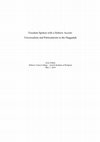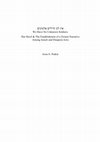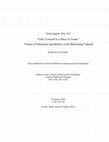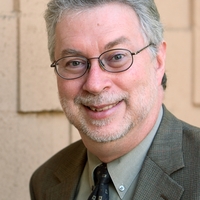Papers by Jesse Paikin
This teshuvah was researched and written together with Student Rabbi Rena Singer, as part of a Ha... more This teshuvah was researched and written together with Student Rabbi Rena Singer, as part of a Halakhic Decision Making class at Hebrew Union College-Jewish Institute of Religion, under the instruction of Dr. Alyssa Gray.
The modern production of eggs includes practices that raise questions about the ethical treatment of hens, including the killing of mass amount of chickens that are unable to lay eggs, and the living conditions of the egg-laying hens. Given these factors, do Jewish law and ethics provide any guidance that should inform our consumption of eggs?

While Jewish communities and individual Jews have long understood themselves in context of their ... more While Jewish communities and individual Jews have long understood themselves in context of their place in the wider societies in which they have lived, for most of its history Judaism has been a largely particularistic tradition, chiefly concerned with its own ongoing narrative and how Jews should behave qua Jews. It was not until modernity that consciousnesses emerged within Judaism seeking to understand how Jews should behave and understand their heritage with a more universalistic outlook. Of particular note is how these new traditions played themselves out literarily, as Jewish philosophers and religious leaders attempted to articulate a new Jewish religious identity that wasn’t primarily inward-looking. There is no text that straddles the boundary between particularism and universalism more acutely than the Pesach Haggadah’s retelling of the Israelite Exodus from Egypt.
In this paper, three Haggadot will be explored representing a cross-section of the Jewish religious, philosophical, societal, and geographic spectrum. The traditional Haggadah text is presented in the ArtScroll Abarbanel Haggadah, which includes a base text common to a wide swath of Haggadot. A progressive, American Haggadah is represented by the 1974 Central Conference of American Rabbis’ A Reform Haggadah, which defines itself as “faithful to the elemental structure of the Haggadah… and the intentional complement of the story of Israel’s own deliverance with the Messianic vision for all humanity.” Finally, an Israeli Haggadah is the 2014 Refugee Haggadah, published by a coalition of progressive religious and human rights organizations as a response to the refugee crisis that has confronted Israel since the mid 2000s. Its stated are to question notions of freedom; create a relationship with slavery, freedom and the Exodus; and to connect the Jewish narrative with modern day stories of refugees and persecution. Each of these haggadot – in dialogue with its own sitz im leben – puts forth a different paradigm of the Exodus narrative, applying varying degrees of particularism and universalism.

Har Herzl was conceived with explicit political goals as to its role in fomenting a burgeoning na... more Har Herzl was conceived with explicit political goals as to its role in fomenting a burgeoning national identity and establishing a sweeping national narrative. This national identity was based largely on collective memory and self-sacrifice, and a narrative that strove to connect symbolic themes from pre-state Zionist aspirations, the catastrophe of the Holocaust, and the ultimate redemption represented by the State’s founding. This identity and narrative must be understood as central to the development of Zionist/Israeli civil religion.
Furthermore, the site’s meaning is not statically confined to the historical; its narrative continues to be in dialogue with contemporary Israeli nationalist sentiments, responding and adapting to the sitz im leben of Israelis. Beyond the geographical borders of the State itself, Har Herzl has evolved to play a central role in the Jewish identity formation of young diaspora Jews, as a key educational component of pilgrimage tours.
Har Herzl must be understood to be dynamic and responsive, playing an active role in the civil religion, nationalist identity, and collective memory of both Israeli and Diaspora Jews.
Thesis Chapters by Jesse Paikin

This thesis examines the Bavli's visions of pedagogy and identity, through the paradigm of Joseph... more This thesis examines the Bavli's visions of pedagogy and identity, through the paradigm of Joseph Schwab's Four Commonplaces of education: student, teacher, subject matter, and milieu.
When we filter the Bavli's teaching on education through the paradigm of Schwab's four commonplaces, we see how they can speak to and amplify one other. The power of the texts, I argue, is not only to be found in an attempt to isolate their original sources and intent, but in bringing them together in conversation. When we do, we see that to a remarkable degree, they share an orientation around many of the same concerns: who are teachers and students, and what are their responsibilities to each other and to their shared project? What is the nature of the Torah as a document of knowledge, wisdom, and truth, and how should it be studied? Where are the most nourishing places for learning to take place?
This thesis also provides a framework to answer the question: "What is Jewish about Jewish education," and suggests that there is a transcendent, spiritual component to Jewish education in the eyes of the Bavli.
Books by Jesse Paikin
The Fragile Dialogue: New Voices of Liberal Zionism, 2017
This essay argues that Jewish texts - in particular the Talmud - have the power to transcend geog... more This essay argues that Jewish texts - in particular the Talmud - have the power to transcend geographic, linguistic, and philosophical differences, and should define and inform progressive religious Zionism. The Talmud demands active participation in a communal endeavor and a willingness to represent divergent viewpoints, and thus is a fruitful model. This essay includes an analysis of four representative texts as an example of such an endeavour.









Uploads
Papers by Jesse Paikin
The modern production of eggs includes practices that raise questions about the ethical treatment of hens, including the killing of mass amount of chickens that are unable to lay eggs, and the living conditions of the egg-laying hens. Given these factors, do Jewish law and ethics provide any guidance that should inform our consumption of eggs?
In this paper, three Haggadot will be explored representing a cross-section of the Jewish religious, philosophical, societal, and geographic spectrum. The traditional Haggadah text is presented in the ArtScroll Abarbanel Haggadah, which includes a base text common to a wide swath of Haggadot. A progressive, American Haggadah is represented by the 1974 Central Conference of American Rabbis’ A Reform Haggadah, which defines itself as “faithful to the elemental structure of the Haggadah… and the intentional complement of the story of Israel’s own deliverance with the Messianic vision for all humanity.” Finally, an Israeli Haggadah is the 2014 Refugee Haggadah, published by a coalition of progressive religious and human rights organizations as a response to the refugee crisis that has confronted Israel since the mid 2000s. Its stated are to question notions of freedom; create a relationship with slavery, freedom and the Exodus; and to connect the Jewish narrative with modern day stories of refugees and persecution. Each of these haggadot – in dialogue with its own sitz im leben – puts forth a different paradigm of the Exodus narrative, applying varying degrees of particularism and universalism.
Furthermore, the site’s meaning is not statically confined to the historical; its narrative continues to be in dialogue with contemporary Israeli nationalist sentiments, responding and adapting to the sitz im leben of Israelis. Beyond the geographical borders of the State itself, Har Herzl has evolved to play a central role in the Jewish identity formation of young diaspora Jews, as a key educational component of pilgrimage tours.
Har Herzl must be understood to be dynamic and responsive, playing an active role in the civil religion, nationalist identity, and collective memory of both Israeli and Diaspora Jews.
Thesis Chapters by Jesse Paikin
When we filter the Bavli's teaching on education through the paradigm of Schwab's four commonplaces, we see how they can speak to and amplify one other. The power of the texts, I argue, is not only to be found in an attempt to isolate their original sources and intent, but in bringing them together in conversation. When we do, we see that to a remarkable degree, they share an orientation around many of the same concerns: who are teachers and students, and what are their responsibilities to each other and to their shared project? What is the nature of the Torah as a document of knowledge, wisdom, and truth, and how should it be studied? Where are the most nourishing places for learning to take place?
This thesis also provides a framework to answer the question: "What is Jewish about Jewish education," and suggests that there is a transcendent, spiritual component to Jewish education in the eyes of the Bavli.
Books by Jesse Paikin
The modern production of eggs includes practices that raise questions about the ethical treatment of hens, including the killing of mass amount of chickens that are unable to lay eggs, and the living conditions of the egg-laying hens. Given these factors, do Jewish law and ethics provide any guidance that should inform our consumption of eggs?
In this paper, three Haggadot will be explored representing a cross-section of the Jewish religious, philosophical, societal, and geographic spectrum. The traditional Haggadah text is presented in the ArtScroll Abarbanel Haggadah, which includes a base text common to a wide swath of Haggadot. A progressive, American Haggadah is represented by the 1974 Central Conference of American Rabbis’ A Reform Haggadah, which defines itself as “faithful to the elemental structure of the Haggadah… and the intentional complement of the story of Israel’s own deliverance with the Messianic vision for all humanity.” Finally, an Israeli Haggadah is the 2014 Refugee Haggadah, published by a coalition of progressive religious and human rights organizations as a response to the refugee crisis that has confronted Israel since the mid 2000s. Its stated are to question notions of freedom; create a relationship with slavery, freedom and the Exodus; and to connect the Jewish narrative with modern day stories of refugees and persecution. Each of these haggadot – in dialogue with its own sitz im leben – puts forth a different paradigm of the Exodus narrative, applying varying degrees of particularism and universalism.
Furthermore, the site’s meaning is not statically confined to the historical; its narrative continues to be in dialogue with contemporary Israeli nationalist sentiments, responding and adapting to the sitz im leben of Israelis. Beyond the geographical borders of the State itself, Har Herzl has evolved to play a central role in the Jewish identity formation of young diaspora Jews, as a key educational component of pilgrimage tours.
Har Herzl must be understood to be dynamic and responsive, playing an active role in the civil religion, nationalist identity, and collective memory of both Israeli and Diaspora Jews.
When we filter the Bavli's teaching on education through the paradigm of Schwab's four commonplaces, we see how they can speak to and amplify one other. The power of the texts, I argue, is not only to be found in an attempt to isolate their original sources and intent, but in bringing them together in conversation. When we do, we see that to a remarkable degree, they share an orientation around many of the same concerns: who are teachers and students, and what are their responsibilities to each other and to their shared project? What is the nature of the Torah as a document of knowledge, wisdom, and truth, and how should it be studied? Where are the most nourishing places for learning to take place?
This thesis also provides a framework to answer the question: "What is Jewish about Jewish education," and suggests that there is a transcendent, spiritual component to Jewish education in the eyes of the Bavli.